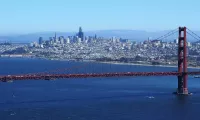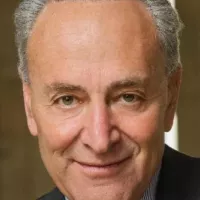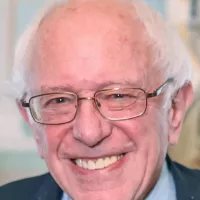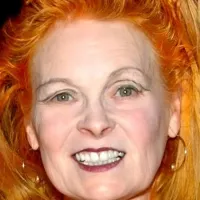The Louvre Museum, located in Paris, France, is one of the world's most renowned art museums. Situated in the 1st arrondissement on the Right Bank of the Seine, it houses iconic Western artworks like the Mona Lisa, Venus de Milo, and Winged Victory. Originally built as a fortress in the late 12th to 13th century under Philip II, the Louvre Palace's medieval remnants are still visible. In 1546, Francis I transformed it into the primary residence of the French kings due to urban expansion rendering its defensive function obsolete.
1901: Discovery of the Code of Hammurabi
In 1901, the 2.25-metre Code of Hammurabi was discovered. This Babylonian law code is now displayed prominently at the Louvre.
1905: Transfer of non-Western artefacts
In 1905, many of the Musée de Marine's significant holdings of non-Western artefacts were transferred to the Trocadéro ethnography museum, the National Antiquities Museum in Saint-Germain-en-Laye, and the Chinese Museum in the Palace of Fontainebleau.
1909: Jeu de Paume repurposed as an art gallery
In 1909, the Jeu de Paume building in the Tuileries Garden, initially intended as a sports venue, was repurposed as an art gallery.
1920: Reversal of Naval Museum Management
In 1920, the change that brought the Naval Museum in the Cour Carrée's attic under the common Louvre Museum management in 1848 was reversed.
1922: Introduction of entrance fee
In 1922, an entrance fee was introduced to the Louvre, except on Sundays. Prior to this, access to the museum was free.
February 1926: Musée de Cluny placed under Louvre's authority
In February 1926, the Musée de Cluny was brought under the aegis of the Louvre's department of decorative arts (Objets d'Art). The Musée de Cluny's creation dates back to the 19th century.
1928: Salle du Manège becomes main entrance lobby
In 1928, the Salle du Manège was transferred to the museum and became its main entrance lobby.
1932: Redesign of the Escalier Daru
In 1932, Louvre architects Camille Lefèvre and Albert Ferran redesigned the Escalier Daru to its current appearance.
1934: Cour du Sphinx covered and Decorative arts exhibits expanded
In 1934, the Cour du Sphinx in the South Wing was covered by a glass roof and decorative arts exhibits were expanded in the first floor of the North Wing of the Cour Carrée, including some of France's first period room displays.
1935: Baron Edmond de Rothschild's donation
In 1935, Baron Edmond de Rothschild donated 4,000 prints, 3,000 drawings, and 500 illustrated books to the Louvre.
August 1939: Evacuation of art collection begins
On August 27, 1939, after two days of packing, truck convoys began to leave Paris, initiating the Louvre's elaborate plan to evacuate its art collection due to World War II.
1940: Third Republic ends
The Third Republic ended in 1940. During its reign (1870–1940) the Louvre acquired new artefacts mainly via donations, gifts, and sharing arrangements on excavations abroad.
1943: Musée de Marine relocated
In 1943, the Musée de Marine was relocated to the Palais de Chaillot.
1945: Collections of Asian art moved
In 1945, the Louvre's extensive collections of Asian art were moved to the Guimet Museum.
1945: Art begins returning to the Louvre
In early 1945, after the liberation of France, art began returning to the Louvre after being evacuated during World War II.
1946: Exhibition of Recovered Artworks
In 1946, the recovered artworks were exhibited.
1946: Post-World War II reopening
Since its post-World War II reopening in 1946, the Louvre has been closed on Tuesdays, and habitually open to the public the rest of the week except for some holidays.
1947: Ceiling ornaments removed from Salle des Etats
In 1947, Edmond Guillaume's ceiling ornaments were removed from the Salle des Etats, where the Mona Lisa was first displayed in 1966.
1947: Jeu de Paume becomes exhibition space for Louvre's 19th and 20th century paintings
In 1947, the Jeu de Paume became the exhibition space for the Louvre's collections of late 19th and early 20th paintings, including Impressionism, as the Louvre Palace lacked space. It was brought under direct management by the Louvre's Département des Peintures.
1947: Catalogue of recovered artworks accessible online
Since November 1996, the partly illustrated catalogue of recovered artworks from 1947–1949 has been accessible online and completed.
1949: Unclaimed artworks entrusted to Direction des Musées de France
In 1949, 2,130 unclaimed pieces of artwork, including 1,001 paintings, were entrusted to the Direction des Musées de France by the Office des Biens Privés. These artworks were classified as MNRs (Musées Nationaux Recuperation).
1949: Catalogue of recovered artworks accessible online
Since November 1996, the partly illustrated catalogue of recovered artworks from 1947–1949 has been accessible online and completed.
1950: Interior decoration of the Grande Galerie streamlined
Around 1950, Louvre architect Jean-Jacques Haffner streamlined the interior decoration of the Grande Galerie.
1950: Recovered artworks shown publicly for four years
From 1950 to 1954, the recovered artworks were shown all together to the public in order to allow rightful claimants to identify their properties.
1951: Restitution of recovered artworks begins
From 1951 to 1965, about 37 pieces of recovered artworks were restituted to their rightful owners.
1953: Braque Ceiling Installed
In 1953, Braque's ceiling was installed in the Salle Henri II, adjacent to the Salle des Bronzes.
1953: New ceiling inaugurated in Salle Henri II
In 1953, a new ceiling by Georges Braque was inaugurated in the Salle Henri II, next to the Salle La Caze.
1954: Recovered artworks shown publicly for four years
From 1950 to 1954, the recovered artworks were shown all together to the public in order to allow rightful claimants to identify their properties.
1961: Finance Ministry leaves the Pavillon de Flore
In 1961, the Finance Ministry accepted to leave the Pavillon de Flore at the southwestern end of the Louvre building, as Verne had recommended in his 1920s plan.
1965: Restitution of recovered artworks begins
From 1951 to 1965, about 37 pieces of recovered artworks were restituted to their rightful owners.
1966: Mona Lisa displayed in the Salle des Etats
In 1966, the Mona Lisa was first displayed in the Salle des Etats after Edmond Guillaume's ceiling ornaments were removed in 1947.
1970: Formation of the gypsothèque (plaster cast gallery)
In 1970, the gypsothèque (plaster cast gallery) of the Louvre was formed by reuniting inventories from the Louvre, the Beaux-Arts de Paris, and the Art and Archaeology Institute of the Sorbonne University.
1972: Salon Carré's museography remade
In 1972, the Salon Carré's museography was remade with lighting from a hung tubular case, designed by Louvre architect Marc Saltet with assistance from designers André Monpoix, Joseph-André Motte and Paulin.
1976: Musée du Petit Palais opens
In 1976, the Musée du Petit Palais opened in the former urban mansion of the archbishops of Avignon. Part of its permanent collection is made of artworks from the Collection Campana deposited by the Louvre.
1977: Termination of Musée de Cluny affiliation with the Louvre
In 1977, the affiliation between the Musée de Cluny and the Louvre's department of decorative arts was terminated, ending their administrative connection.
1978: Project to create Musée des Monuments Antiques left unfinished
In 1978, the project to create the Musée des Monuments Antiques, initially called the Musée des Monuments Antiques from 1970 to 1978, was left unfinished.
1981: Grand Louvre plan proposed
In 1981, French President François Mitterrand proposed the Grand Louvre plan to relocate the Finance Ministry and restructure the Louvre.
1983: Renaissance armor stolen
In 1983, a Renaissance era ceremonial helmet and breastplate were stolen from the Louvre museum, causing distress to the museum staff. The items were later recovered in 2021.
1984: Master plan for Grand Louvre proposed
In 1984, I. M. Pei proposed a master plan for the Grand Louvre, including an underground entrance space accessed through a glass pyramid in the Louvre's central Cour Napoléon.
1986: Post-1850 Works Relocated to Musée d'Orsay
In 1986, all post-1850 sculpture works were relocated from the Louvre to the new Musée d'Orsay.
1986: Louvre's 19th and 20th century paintings transferred to Musée d'Orsay
In 1986, the Louvre's collections of late 19th and early 20th century paintings, including Impressionism, were transferred from the Jeu de Paume to the newly created Musée d'Orsay.
1986: Collection Split with Musée d'Orsay Opening
In 1986, with the conversion of the d'Orsay train station into the Musée d'Orsay, the Louvre's collection was split, with pieces completed after the 1848 Revolution moved to the new museum.
October 1988: Inauguration of open spaces surrounding the pyramid
On October 15, 1988, the open spaces surrounding the pyramid at the Louvre were inaugurated.
March 1989: Opening of underground lobby
On March 30, 1989, the underground lobby of the Louvre was opened.
December 1992: Opening of new galleries of early modern French paintings
On December 15, 1992, new galleries of early modern French paintings on the 2nd floor of the Cour Carrée opened, designed by Italo Rota.
October 1993: Opening of Carrousel du Louvre
In October 1993, further underground spaces known as the Carrousel du Louvre, centered on the Inverted Pyramid and designed by Pei and Macary, opened.
November 1993: Inauguration of the renovated North Wing
On November 18, 1993, Mitterrand inaugurated the renovated North (Richelieu) Wing in the former Finance Ministry site, the museum's largest single expansion in its entire history, designed by Pei, his French associate Michel Macary, and Jean-Michel Wilmotte.
1993: Main entrance moved underground
Since 1993, the museum's main entrance has been the underground space under the Louvre Pyramid, or Hall Napoléon, accessed from the Pyramid, the underground Carrousel du Louvre, or the passage Richelieu.
1994: Refurbished galleries opened
In 1994, refurbished galleries of Italian sculptures and Egyptian antiquities opened at the Louvre.
1995: Jacques Chirac succeeds Mitterrand
In 1995, President Jacques Chirac succeeded Mitterrand and later insisted on the return of non-Western art to the Louvre.
November 1996: Catalogue of recovered artworks accessible online
Since November 1996, the partly illustrated catalogue of recovered artworks from 1947–1949 has been accessible online and completed.
1996: Increased publicity for recovered artworks
According to Serge Klarsfeld, since the now complete and constant publicity which the artworks got in 1996, the majority of the French Jewish community is nevertheless in favour of the return to the normal French civil rule of prescription acquisitive of any unclaimed good after another long period of time and consequently to their ultimate integration into the common French heritage instead of their transfer to foreign institutions like during World War II.
1997: Mattéoli Commission initiated to investigate unclaimed artworks
In 1997, Prime Minister Alain Juppé initiated the Mattéoli Commission, headed by Jean Mattéoli, to investigate the matter of unclaimed artworks.
1997: New renovated rooms opened in the Sully and Denon wings
In 1997, the third and last main phase of the Grand Louvre plan unfolded, with new renovated rooms in the Sully and Denon wings.
1998: New entrance opened at the porte des Lions
In 1998, a new entrance at the porte des Lions opened, leading on the first floor to new rooms of Spanish paintings.
1999: Secondary entrance at the Porte des Lions created
In 1999, a secondary entrance was created at the Porte des Lions, near the western end of the Denon Wing. However, it is not permanently open.
September 2000: Gilbert Chagoury and Rose-Marie Chagoury Gallery Dedicated
In September 2000, the Louvre Museum dedicated the Gilbert Chagoury and Rose-Marie Chagoury Gallery to display tapestries donated by the Chagourys, including a 16th-century six-part tapestry suite commissioned for Colbert de Seignelay.
2000: Installation of highlights from Musée du Quai Branly collections
In 2000, a selection of highlights from the collections of what would become the Musée du Quai Branly – Jacques Chirac was installed on the ground floor of the Pavillon des Sessions, six years ahead of the Musée du Quai Branly itself.
2001: Henri Loyrette Replaced Pierre Rosenberg
In 2001, Henri Loyrette replaced Pierre Rosenberg as the Director of the Louvre.
2001: Gypsothèque brought under Louvre's management
In 2001, the gypsothèque project was brought under the Louvre's management by ministerial decision, after being left unfinished since 1978.
2002: Visitor count doubled
As of 2002, the Louvre's visitor count had doubled from its pre-Grand-Louvre levels, demonstrating the success of the project.
May 2003: Initiative for cultural projects outside Paris
In May 2003, then culture minister Jean-Jacques Aillagon initiated cultural projects outside of Paris to make Parisian institutions available to a broader French public, including a Louvre satellite.
August 2003: Creation of new department of Islamic Art
On August 1, 2003, President Jacques Chirac created a new department of Islamic Art at the Louvre by executive order, moving the collections from their prior underground location.
2003: Islamic Art Holdings Became Separate Department
In 2003, the Islamic art holdings became a separate department at the Louvre, having previously been part of the decorative arts department.
2003: Requirement to Generate Funds for Projects
Since 2003, the Louvre has been required to generate funds for its projects, increasing its financial independence from the French government.
2004: Location of Louvre-Lens selected
In 2004, a former mining site in the town of Lens was selected as the location for the Louvre-Lens project.
2004: Eugène Delacroix's former workshop placed under Louvre management
In 2004, the small museum located in Eugène Delacroix's former workshop in central Paris was placed under the Louvre's management. The museum was created in the 1930s.
September 2005: Architects selected for Louvre-Lens building and garden
In September 2005, Japanese architects SANAA and landscape architect Catherine Mosbach were selected to design the Louvre-Lens museum building and garden, respectively.
2006: Decrease in Government Funding
By 2006, government funds for the Louvre had decreased from 75% to 62% of the total budget, increasing the need for self-generated revenue.
2006: Increased Loan Activity
In 2006, the Louvre loaned 1,300 works, enabling it to borrow more foreign works as part of policy changes implemented under Henri Loyrette.
2006: Last claims of French owners and their heirs ended
Until the last claims of French owners and their heirs ended again in 2006, the restitutions, according sometimes to less formal criteria, concerned 47 more pieces (26 paintings, with 6 from the Louvre including a then displayed Tiepolo).
2007: Anselm Kiefer Invited to Create Work
In 2007, German painter Anselm Kiefer was invited to create Athanor for the North stairs of the Perrault Colonnade. This decision marked the Louvre's reengagement with contemporary art under Henri Loyrette, 50 years after the last order to a contemporary artist.
2007: Exhibition about La Caze Collection
In 2007, the exhibition "1869: Watteau, Chardin... entrent au Louvre. La collection La Caze" focused on the La Caze Collection, a bequest to the Musée du Louvre in 1869.
2007: Agreement signed for Louvre Abu Dhabi
In early 2007, an agreement was signed establishing that Abu Dhabi would pay €832,000,000 (US$1.3 billion) for the Louvre name use, managerial advice, art loans, and special exhibitions. This agreement was for the Louvre Abu Dhabi.
2008: Louvre Budget in 2008
In 2008, the French government provided $180 million of the Louvre's $350 million yearly budget, with the remainder coming from private contributions and ticket sales.
2008: Existence of Egyptian Fresco fragments brought to attention
In 2008, the existence of five Egyptian fragments of frescoes, eventually returned in 2009, was brought to the Louvre authorities' attention.
2009: High Museum of Art Loan Payment
From 2006 to 2009, the Louvre lent artwork to the High Museum of Art in Atlanta, Georgia, receiving a $6.9 million payment for renovations.
2009: Plan for Storage Facility Approved
In 2009, a plan approved by Minister of culture Frédéric Mitterrand aimed to create a storage facility for objects from the Louvre and other museums but was later scrapped.
2009: Louvre returns Egyptian fresco fragments
In 2009, the Louvre returned five Egyptian fragments of frescoes (30 cm x 15 cm each) after their existence was brought to the authorities' attention in 2008.
2009: Reports of worker abuses on Saadiyat Island
Since 2009, there have been reports of abuses of foreign construction workers on Saadiyat Island, including the arbitrary withholding of wages, unsafe working conditions, and failure of companies to pay recruitment fees.
2010: Cy Twombly Completed New Ceiling
In 2010, American painter Cy Twombly completed a new ceiling for the Salle des Bronzes (the former Salle La Caze), creating a counterpoint to Braque's ceiling installed in the adjacent Salle Henri II in 1953.
2010: Guggenheim Foundation and TDIC recognize workers' rights issues
In 2010, the Guggenheim Foundation placed on its website a joint statement with Abu Dhabi's Tourism Development and Investment Company (TDIC) recognizing workers' rights issues, including health and safety, access to passports, and recruitment fees.
2011: Artists urge boycott of Louvre Abu Dhabi
In 2011, over 130 international artists urged a boycott of the new Guggenheim museum as well as Louvre Abu Dhabi, citing reports, since 2009, of abuses of foreign construction workers on Saadiyat Island.
September 2012: Opening of new section of Islamic art
On September 22, 2012, the Louvre opened a new section of Islamic art, together with collections from the Roman-era Eastern Mediterranean, in the Denon Wing.
2012: Nintendo 3DS used as audio guides
Beginning in 2012, Nintendo 3DS portable video game systems were used as the official museum audio guides at the Louvre.
2012: TDIC engages PricewaterhouseCoopers as an independent monitor
In 2012, TDIC engaged PricewaterhouseCoopers as an independent monitor required to issue reports every quarter on the labor conditions at the Louvre construction site.
2012: Collaboration with Fine Arts Museums of San Francisco
In 2012, the Louvre and the Fine Arts Museums of San Francisco announced a five-year collaboration on exhibitions, publications, art conservation, and educational programming. The €98.5 million expansion of the Islamic Art galleries also took place with state funding.
2012: Louvre-Lens inaugurated
In 2012, the Louvre-Lens was inaugurated by President François Hollande. The museum is run by the Hauts-de-France region under a contract with the Louvre for art loans and brand use.
2012: Gypsothèque opens to the public
In 2012, the gypsothèque, located in the Petite Écurie of Versailles Palace, opened to the public, after being brought under the Louvre's management in 2001.
April 2013: Jean-Luc Martinez Appointed Director
In April 2013, Jean-Luc Martinez replaced Henri Loyrette as the Director of the Louvre, reporting to the French Ministry of Culture and Communications.
2013: Louvre to Move Artworks to Liévin
In 2013, Aurélie Filippetti announced that the Louvre would move over 250,000 artworks to a storage area in Liévin, with the Louvre being the sole owner and manager.
2013: Report of "modern-day slavery" conditions
In 2013, The Observer reported that the working conditions for the workers at the Louvre construction site on Saadiyat amounted to "modern-day slavery".
2013: Nintendo 3DS-based audiovisual visitor guide created
In 2013, the museum contracted Nintendo to create a 3DS-based audiovisual visitor guide. Entitled Nintendo 3DS Guide: Louvre, it contains over 30 hours of audio and over 1,000 photographs of artwork and the museum itself, including 3D views, and also provides navigation thanks to differential GPS transmitters installed within the museum.
June 2014: Decorative Arts Section Opens
On 6 June 2014, the Decorative Arts section on the first floor of the Cour Carrée's northern wing opened after comprehensive refurbishment.
2014: Improved labor conditions reported; recruitment fees remain a concern
In 2014, Guggenheim's Director Richard Armstrong stated that he believed the living conditions for the workers at the Louvre project were now good and that fewer passports were being confiscated. The main remaining issue was the recruitment fees charged to workers. Later in 2014, the Guggenheim's architect, Gehry, commented that working with Abu Dhabi officials to improve labor conditions at the museum's site is a "moral responsibility" and encouraged the TDIC to build additional worker housing and cover recruitment fees.
July 2015: Team Selected for Liévin Storage Complex Design
In July 2015, a team led by British firm Rogers Stirk Harbour + Partners was selected to design the complex in Liévin to store artworks from the Louvre.
2016: Agreement between Iranian and French Presidents
In 2016, an agreement was reached between Iranian and French presidents that resulted in the opening of an exhibition of artworks and relics from the Louvre Museum in Tehran in March 2018.
2017: Last Price Increase before 2023
In 2017 the Louvre Museum in Paris raised its ticket prices. The next increase was in 2023.
2017: Louvre Abu Dhabi inaugurated
In 2017, the Louvre Abu Dhabi was inaugurated and opened to the public three days later. It is located on Saadiyat Island and was designed by Jean Nouvel.
March 2018: Exhibition Opened in Tehran
In March 2018, an exhibition of artworks and relics from the Louvre Museum opened to visitors in Tehran as a result of a 2016 agreement between Iranian and French presidents.
June 2018: Exhibition in Khorasan Grand Museum
In June 2018, the exhibition from the Louvre was set to be held in the Khorasan Grand Museum in Mashhad, northeastern Iran, following its time in Tehran.
2018: Louvre attendance before the COVID-19 pandemic.
In 2018, prior to the COVID-19 pandemic, the Louvre had 10.8 million visitors. This number declined during the pandemic but started to recover in later years.
2018: Record Visitor Numbers in 2018
In 2018, the Louvre had a record 10.2 million visitors.
2018: Record Attendance in 2018
In 2018, the Louvre recorded its highest ever attendance of 10.2 million visitors.
September 2019: New Islamic Art Department Opened
In September 2019, a new and improved Islamic art department was opened at the Louvre by Princess Lamia bint Majed Al Saud. The department exhibits 3,000 pieces dating from the 7th to the 19th centuries.
October 2019: Leonardo da Vinci exhibit opens
In October 2019, the Louvre held the largest single exhibit of Leonardo da Vinci's work to commemorate the 500th anniversary of his death. The exhibition featured over a hundred items, including paintings, drawings, and notebooks. Eleven of Da Vinci's fewer than twenty completed paintings were on display, five of which are owned by the Louvre.
2019: Visitor Numbers in 2019
In 2019, the Louvre recorded 9.6 million visitors, prior to the impact of the COVID-19 pandemic.
2019: Louvre opens art storage and research facility in Liévin
Since 2019, the Louvre has maintained a large art storage and research facility in the Northern French town of Liévin, the Centre de conservation du Louvre. This facility is not open to the public.
January 2020: New Contemporary Art Commission Inaugurated
In January 2020, under Jean-Luc Martinez's direction, the museum inaugurated a new contemporary art commission, L'Onde du Midi by Elias Crespin, a Venezuelan kinetic artist. The sculpture was installed under the Escalier du Midi.
February 2020: Louvre Closed Due to COVID-19
In February 2020, specifically on the 29th, the Louvre closed its doors due to the impact of the COVID-19 pandemic, reflecting the widespread effect on arts and cultural heritage sites.
March 2021: Objects Accessible Online
Since 24 March 2021, 482,943 of the Musée du Louvre's 615,797 objects are accessible online.
May 2021: Louvre Reopened After Closure
In May 2021, specifically on the 19th, the Louvre reopened after being closed due to the COVID-19 pandemic. The closure had resulted in a significant decrease in visitors.
2021: Laurence des Cars appointed director; Louvre visitor numbers up from previous year
In 2021, Laurence des Cars was selected by French president Emmanuel Macron as the new director of the Louvre, becoming the first woman to hold the position. The museum's visitor numbers rose 170% from 2021, but were still below pre-pandemic numbers.
2021: Redesign of Salle des Bronzes
In 2021, Louvre architect Michel Goutal redesigned the floor and walls of the Salle des Bronzes to revert changes made in the late 1930s. This redesign triggered protests from the Cy Twombly Foundation.
2021: Stolen Renaissance armor recovered
In 2021, a Renaissance era ceremonial helmet and breastplate stolen from the Louvre museum in 1983 were recovered. The museum noted that the 1983 theft had "deeply troubled all the staff at the time."
2022: Attendance in 2022
In 2022, attendance at the Louvre was lower than the 8.9 million recorded in 2023.
2022: Louvre visitor numbers increase but remain below pre-pandemic levels
In 2022, the Louvre was visited by over 7.6 million visitors, representing a 170 percent increase from 2021, but still below the 10.8 million visitors recorded in 2018 before the onset of the COVID-19 pandemic.
August 2023: Virtual tours made available
As of August 2023, virtual tours through rooms and galleries of the Louvre became accessible online.
2023: Attendance Rises in 2023
In 2023, attendance at the Louvre rose to 8.9 million, 14 percent above 2022 levels but still below the 2018 record of 10.2 million.
2023: Louvre raises ticket prices and caps attendance
In 2023, the Louvre Museum in Paris increased ticket prices by 30%, the first increase since 2017. The decision to raise prices and cap daily visitors at 30,000 is part of a strategy to support free entry during the Olympics and manage crowds.
April 2024: Musée du Petit Palais rebranded as Musée du Petit Palais – Louvre en Avignon
On April 2, 2024, a new agreement between the City of Avignon and the Louvre allowed the Musée du Petit Palais to be rebranded as Musée du Petit Palais – Louvre en Avignon.
2024: Most-visited museum in the world
In 2024, the Louvre received 8.7 million visitors, making it the most-visited art museum and the most-visited museum of any category in the world.
2024: Olympics Exhibit
In 2024, the Louvre staged an exhibit about the history of the Olympic Games, linking their ancient origins to the modern era, in preparation for the 2024 Olympics.
January 2025: Plans Announced for Louvre Renovation and Expansion
In January 2025, French President Emmanuel Macron announced plans for a renovation and expansion of the Louvre, including a dedicated room for the Mona Lisa, prompted by increasing visitor numbers.
June 2025: Louvre Employees Strike
On 16 June 2025, Louvre employees went on strike to protest chronic issues such as overcrowding, understaffing, and "untenable" working conditions.
September 2025: Retirement of the 3DS Louvre guide
The 3DS Louvre guide was scheduled to be retired in September 2025 and will be replaced by a different guide system.
October 2025: Robbery at the Louvre
In October 2025, burglars broke into the Galerie d'Apollon and stole nine major pieces of jewellery from the crowns of France in a few minutes. They used a construction platform to enter a window. The museum was closed for the day.
October 2025: Louvre Robbery
On 19 October 2025, the Louvre experienced a robbery in the Galerie d'Apollon, where jewelry was stolen after intruders forced a window open. The perpetrators escaped by motorbike. The stolen items included an emerald necklace belonging to Empress Marie-Louise and three jewels from queens Marie-Amelie and Hortense.
2027: End of Louvre artwork exhibition agreement for Louvre Abu Dhabi
In 2027, the agreement allowing the Louvre Abu Dhabi to exhibit artworks from the Louvre expires. The Louvre Abu Dhabi is a separate entity with a contractual relationship with the Louvre.
2037: End of Louvre name use agreement for Louvre Abu Dhabi
In 2037, the agreement allowing the Louvre Abu Dhabi to use the Louvre name expires. The Louvre Abu Dhabi is a separate entity with a contractual relationship with the Louvre.
Mentioned in this timeline

Nintendo is a Japanese multinational video game company based in...

Coronaviruses are a family of RNA viruses affecting mammals and...
India officially the Republic of India is located in South...

San Francisco is a major commercial financial and cultural hub...
World War II - was a global conflict between the...

Abu Dhabi is the capital city of the United Arab...
Trending
32 minutes ago Microsoft Expands Data Centers, Investors See Buying Opportunity Despite Pullback

32 minutes ago Jay Kelly film starring George Clooney and Adam Sandler: Reviews and streaming details.
32 minutes ago Multiple Texas ISDs Earn CTE District of Distinction Awards for Excellence in Education
2 hours ago Australia Rejects Turkey's Climate Summit Co-Hosting Offer: Standoff Intensifies, Albanese Declares 'Not an Option'

2 hours ago MicroStrategy purchased 8,178 Bitcoins amid price dip, Michael Saylor remains bullish.

2 hours ago George Strait Announces Lubbock Concerts: Tickets on Sale November 21st!
Popular

Chuck Schumer is the senior United States Senator from New...

XXXTentacion born Jahseh Dwayne Ricardo Onfroy was a controversial yet...

Bernie Sanders is a prominent American politician currently serving as...

Candace Owens is an American political commentator and author known...

Cristiano Ronaldo often nicknamed CR is a Portuguese professional footballer...

Vivienne Westwood was a highly influential English fashion designer and...
